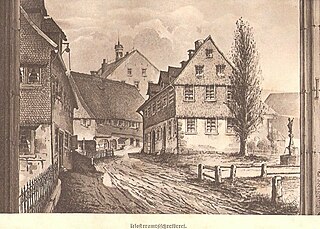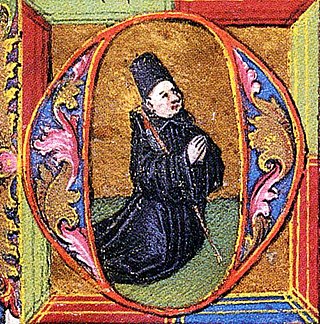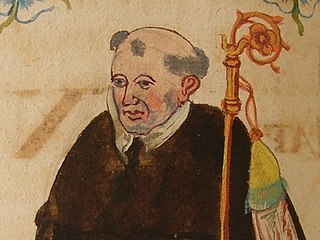Related Research Articles

The Abbey of Saint Gall is a dissolved abbey (747–1805) in a Catholic religious complex in the city of St. Gallen in Switzerland. The Carolingian-era monastery existed from 719, founded by Saint Othmar on the spot where Saint Gall had erected his hermitage. It became an independent principality between 9th and 13th centuries, and was for many centuries one of the chief Benedictine abbeys in Europe. The library of the Abbey is one of the oldest monastic libraries in the world.

St. George's Abbey in the Black Forest was a Benedictine monastery in St. Georgen im Schwarzwald in the southern Black Forest in Baden-Württemberg, Germany.

Clanx Castle is a ruined castle in the Appenzell District of the canton of Appenzell Innerrhoden in Switzerland.
Ulrich II, Lord of Hanau was Lord of Hanau from 1305/1306 until his death.
Ulrich I, Lord of Hanau was the ruling Lord of Hanau from 1281 until his death.

Philip III of Falkenstein, Lord of Falkenstein, Münzenberg and Lich, Hesse was a member of the Lich line of the Falkenstein dynasty, son of Werner I of Falkenstein, Lord of Münzenberg and Falkenstein, who founded the Lich line, and his wife Mechtild of Diez.
Konrad von Gundelfingen was prince-abbot of the Princely Abbey of Kempten from 1284 until 1302. He was also anti-abbot of the Princely Abbey of Saint Gall from 1288 until 1291, appointed by King Rudolf I.

Gozbert was abbot of the Abbey of Saint Gall from 816 until 837 and also abbot of Rheinau Abbey until 850. The beginning of his term of office in Rheinau is unknown.
Ulrich von Sax was Abbot of Saint Gall from 1204 until his death.
Berchtold von Falkenstein was abbot of the Benedictine Abbey of Saint Gall from 1244 until 1272.
Georg von Wildenstein was abbot of the Abbey of Saint Gall from 1360 to 1379.

Ulrich Rösch was abbot of the Abbey of Saint Gall from 1463 to 1491. He is considered one of the most outstanding abbots of the monastery.
Heinrich von Ramstein was abbot of the Benedictine Abbey of Saint Gall from 1301 until 1318.

The House of Breuberg is the name of a dynastic, franconian, noble family in Germany, descendants from the Lords of Lützelbach.

Wilhelm I Count of Montfort was prince-abbot of Saint Gall from 1281 until 1301.
Hiltbold von Werstein was abbot of the Abbey of Saint Gall from 1318 until 1329 and in his capacity as domkustos, also librarian of the Abbey Library.
Ulrich von Güttingen was the abbot of the Abbey of Saint Gall from 1272 until his death.